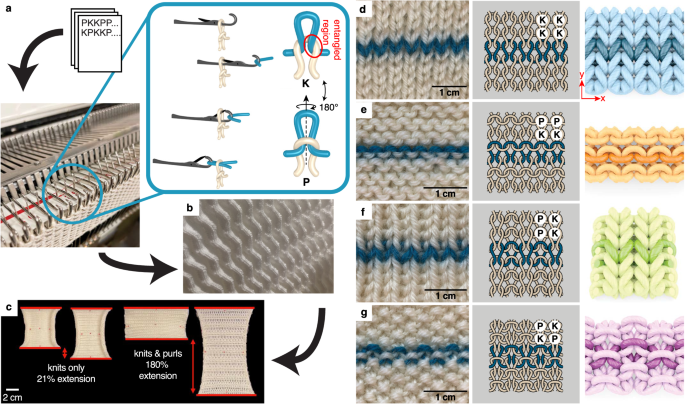2024-06-03 ジョージア工科大学
<関連情報>
- https://research.gatech.edu/unraveling-physics-knitting
- https://www.nature.com/articles/s41467-024-46498-z
編み物素材の仕組みをステッチごとにプログラミングする Programming mechanics in knitted materials, stitch by stitch
Krishma Singal,Michael S. Dimitriyev,Sarah E. Gonzalez,A. Patrick Cachine,Sam Quinn & Elisabetta A. Matsumoto
Nature Communications Published:23 March 2024
DOI:https://doi.org/10.1038/s41467-024-46498-z

Abstract
Knitting turns yarn, a 1D material, into a 2D fabric that is flexible, durable, and can be patterned to adopt a wide range of 3D geometries. Like other mechanical metamaterials, the elasticity of knitted fabrics is an emergent property of the local stitch topology and pattern that cannot solely be attributed to the yarn itself. Thus, knitting can be viewed as an additive manufacturing technique that allows for stitch-by-stitch programming of elastic properties and has applications in many fields ranging from soft robotics and wearable electronics to engineered tissue and architected materials. However, predicting these mechanical properties based on the stitch type remains elusive. Here we untangle the relationship between changes in stitch topology and emergent elasticity in several types of knitted fabrics. We combine experiment and simulation to construct a constitutive model for the nonlinear bulk response of these fabrics. This model serves as a basis for composite fabrics with bespoke mechanical properties, which crucially do not depend on the constituent yarn.



